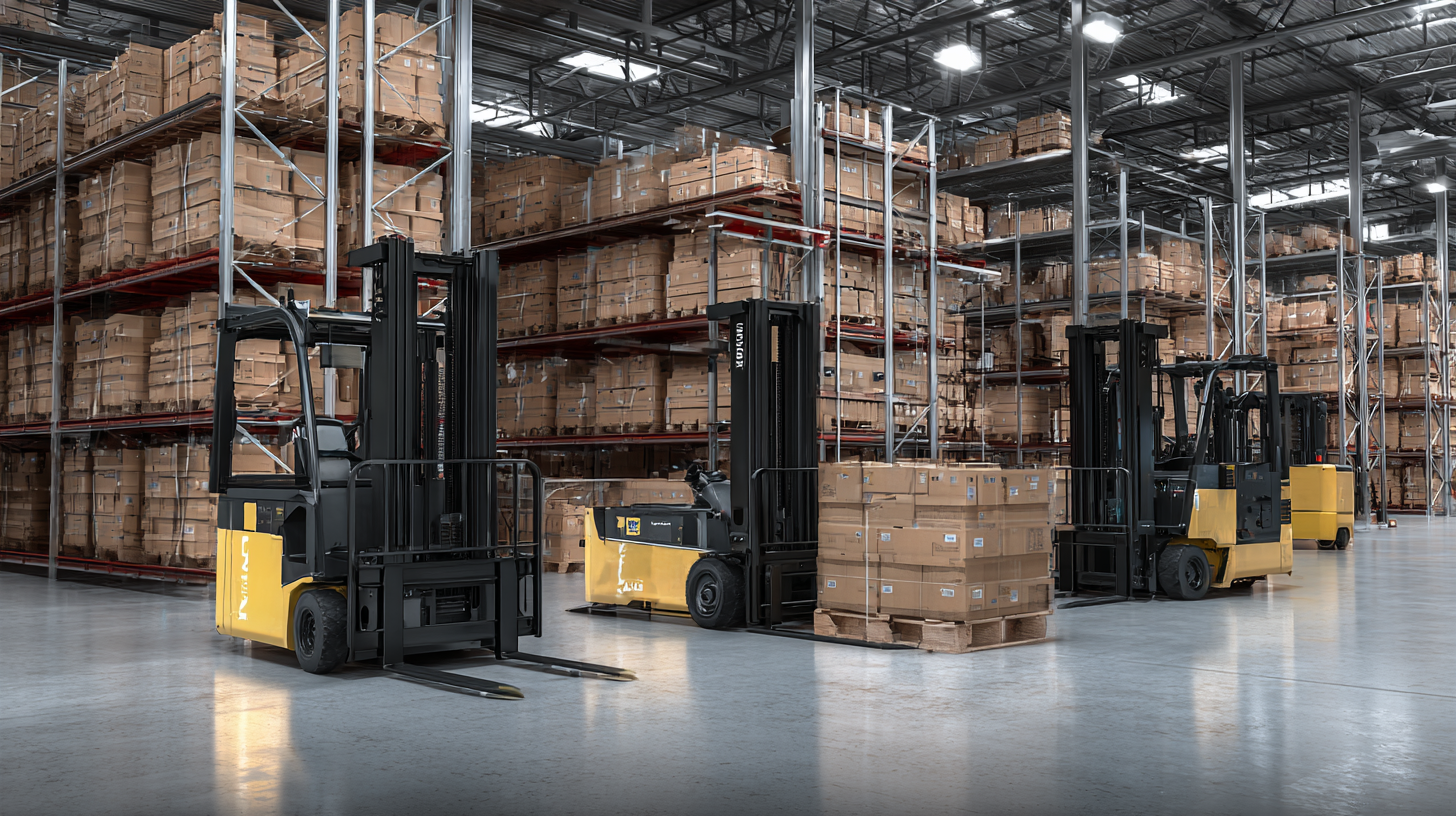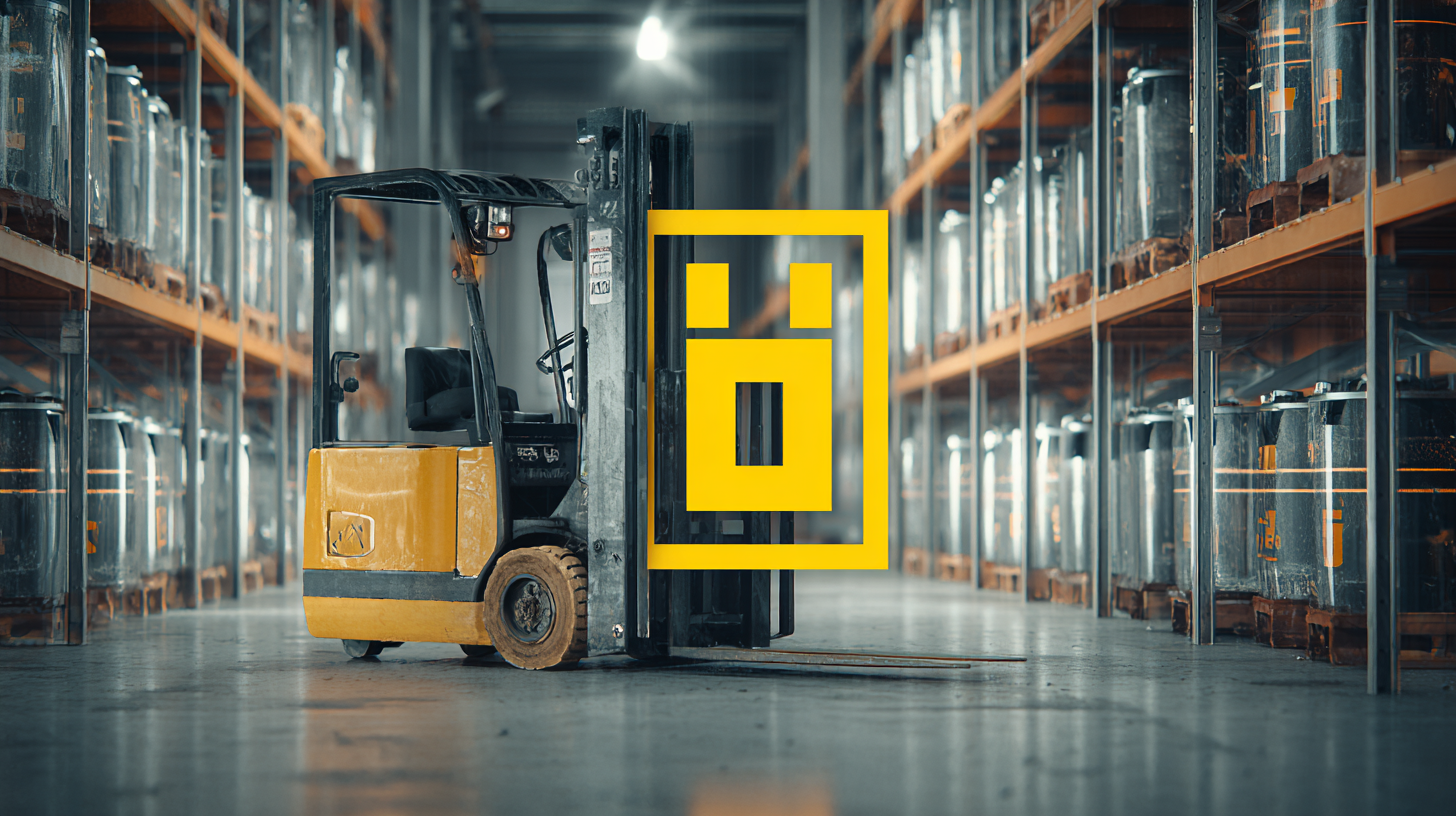How Best Forklift Battery Optimizes Warehouse Efficiency with Real World Applications
In today’s fast-paced logistics environment, optimizing warehouse efficiency is paramount, and one of the key components to achieving this is the choice of an effective forklift battery. According to a report by the Material Handling Industry of America, nearly 50% of operational costs in a warehouse can be attributed to equipment efficiency and energy usage. A high-quality forklift battery not only enhances the performance of material handling equipment but also reduces downtime and maintenance costs, ultimately leading to increased productivity. With advances in battery technology, such as lithium-ion options offering longer run times and faster charging, warehouses are increasingly recognizing the importance of selecting the right battery solutions tailored to their operational needs. This blog will delve into how the right forklift battery can transform warehouse operations, highlighting real-world applications and the criteria for choosing reputable manufacturers in this vital industry.

Understanding Forklift Batteries: Types and Their Impact on Warehouse Operations
When it comes to optimizing warehouse efficiency, understanding the types of forklift batteries is crucial. There are primarily three types of batteries used in forklifts: lead-acid, lithium-ion, and nickel-cadmium. Lead-acid batteries have been the traditional choice due to their affordability and reliability. However, they require regular maintenance, including watering and equalizing, which can result in downtime. This can ultimately impact operational productivity in a busy warehouse environment.

On the other hand, lithium-ion batteries have gained popularity due to their inherent advantages. They offer faster charging times, longer lifespan, and reduced maintenance requirements. This allows warehouses to maximize uptime and efficiency, enabling forklifts to operate longer with fewer interruptions. Additionally, lithium-ion batteries are more energy-efficient, which translates to cost savings over time. Understanding the differences between these battery types can empower warehouse managers to make informed decisions that significantly enhance their overall efficiency and productivity.
The Role of Battery Management Systems in Enhancing Efficiency
The efficiency of warehouse operations heavily hinges on the performance of forklift batteries, and at the heart of optimizing this performance are advanced Battery Management Systems (BMS). These systems play a crucial role in monitoring and managing the charging and discharging cycles of forklift batteries, ensuring optimal power delivery and preventing situations that could lead to battery damage or inefficiency. By maintaining an accurate record of battery status, a BMS enables warehouse managers to identify patterns in battery usage and make informed decisions regarding maintenance and replacement schedules.
Moreover, the implementation of a robust BMS can significantly enhance energy efficiency in warehouse environments. With real-time data analytics, warehouse operators can track the performance of individual batteries and adjust their usage accordingly. For instance, identifying underperforming batteries allows for timely interventions, thereby improving overall fleet performance. Additionally, BMS can integrate with other warehouse management technologies, streamlining operations and enabling seamless communication between equipment and staff. By prioritizing battery health and efficiency, a well-implemented BMS ultimately contributes to a smoother and more productive warehouse experience.
Real-World Applications: Case Studies of Battery Optimization in Warehouses
In recent years, optimizing forklift battery performance has emerged as a crucial factor in enhancing warehouse efficiency. A notable case study from the Material Handling Industry Association (MHIA) highlights a large distribution center that integrated advanced lithium-ion batteries to replace its traditional lead-acid counterparts. This transition led to a 30% increase in operational uptime, significantly reducing downtime related to battery charging and maintenance. The improved energy density and faster charging capabilities of lithium-ion batteries allowed the center to streamline its operations, resulting in an estimated annual savings of $50,000.
Another compelling example is a large-scale manufacturer that adopted smart battery management systems to monitor and analyze battery usage patterns in real-time. According to a report by McKinsey & Company, facilities employing such smart technologies reported a 25% reduction in energy costs associated with warehouse operations. By utilizing data-driven insights, managers were able to schedule charging during off-peak hours, minimizing energy expenses while maximizing equipment availability. These case studies reveal that strategic battery optimization not only leads to immediate cost savings but also enhances overall productivity within warehouse environments.
Best Practices for Maintaining Forklift Batteries for Peak Performance
Maintaining forklift batteries is crucial for ensuring peak performance in warehouse operations. One of the best practices is to schedule regular maintenance checks, which include inspecting the battery terminals for corrosion and ensuring that connections are tight. A clean battery not only reduces the risk of malfunction but also prolongs its lifespan. Additionally, checking the electrolyte levels and topping them off with distilled water can prevent premature wear.

Another vital aspect of battery maintenance is adhering to the correct charging protocols. Operators should avoid letting batteries discharge completely before recharging, as this can lead to sulfation and reduced capacity. Implementing a proper charging routine, such as utilizing smart chargers, can optimize battery health by preventing overcharging and extending operational time. Training staff on these practices ensures that everyone understands the importance of battery care and its impact on warehouse efficiency.
Maximizing Your Investment: Choosing the Right Forklift Battery for Your Needs
Selecting the right forklift battery is crucial for maximizing operational efficiency in any warehouse. According to a report by the Material Handling Industry of America, using the appropriate battery can increase a forklift's productivity by up to 30%. When choosing a forklift battery, consider factors such as the application, duration of use, and charging capabilities to ensure it meets your demands effectively.
**Tips for Selection:** Evaluate your operational hours and choose a battery with suitable amp-hour ratings. A battery that can maintain optimal performance throughout your shifts will minimize downtime and enhance workflow. Additionally, opting for Lithium-ion batteries can lead to a reduction in energy costs by up to 30% due to their higher efficiency and faster charging times compared to traditional lead-acid batteries.
In addition, maintenance requirements should also influence your choice. A study by PMMI shows that improving battery maintenance and management can extend life spans by more than 50%, further reducing long-term costs. Therefore, implement regular maintenance schedules and invest in proper charging equipment to maximize the lifespan of your forklift batteries, ensuring your investment yields the best returns in warehouse efficiency.
Warehouse Efficiency Optimization with Forklift Batteries
This bar chart illustrates the comparative warehouse efficiency percentages of different types of forklift batteries. Lithium-Ion batteries showcase the highest efficiency, reflecting their modern technology and benefits in operational environments.
